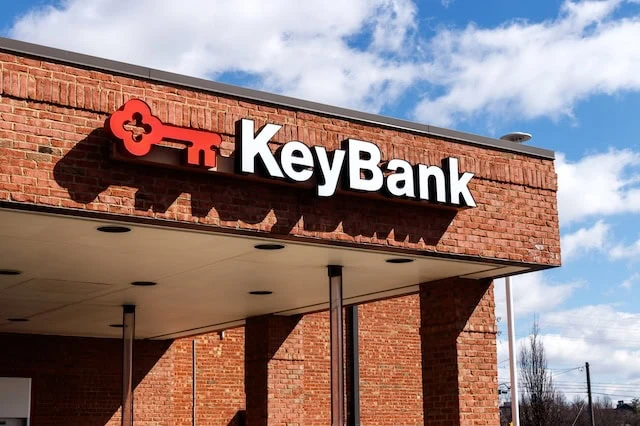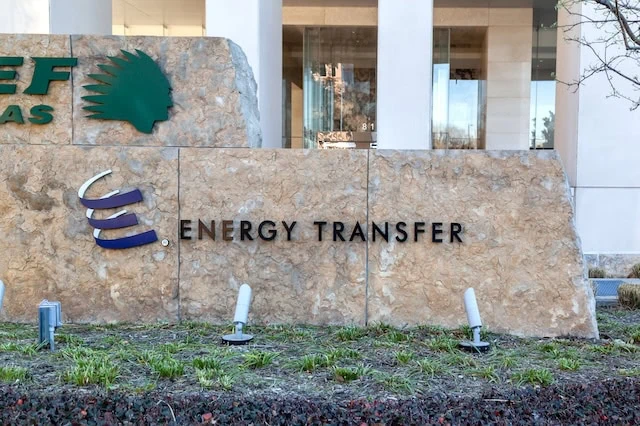Who among us can resist the allure of high-yield dividend stocks? Their outsized cash-generation capabilities make them the stuff of dreams for those living on a fixed income—as well as for any investors who simply want a little performance ballast during periods of rough stock-price returns.
Alas, simply targeting the fattest dividend yields on offer, and calling it a day, is often a recipe for disaster.
As Rush would say, “You don’t get something for nothing.” A stock offering several times more yield than the market average might very well be the undiscovered can’t-miss stock pick of the year … or it might be flashing a signal that many investors have passed it up for a reason. And sure, a very high yield can help make up for some underperformance in the stock price—but only if the dividend continues to be paid. However, some high-dividend stocks have unsustainable payouts that are just an earnings miss or economic downturn away from being cut.
None of this is to say you should run screaming from any stock offering an outsized payday. It’s just to say you shouldn’t buy them on yield alone—quality matters.
Today, I’ll examine a group of high-yield dividend stocks that are showing more signs of fundamental quality than most. Not only do they deliver much sweeter yields than your average stock, but they also have the confidence of Wall Street’s analyst community.
Disclaimer: This article does not constitute individualized investment advice. These securities appear for your consideration and not as personalized investment recommendations. Act at your own discretion.
Editor’s Note: Tabular data presented in this article is up-to-date as of Nov. 20, 2024.
Featured Financial Products
Table of Contents
Dividend Yields (And Dividend Safety)

Dividend yield is a simple calculation—annual dividend / price x 100—that can mean a world of difference for investors, especially those reliant on income.
Consider this. Let’s say you have a $1 million nest egg heading into retirement. If your portfolio yields 3%, you’ll collect $30,000 in dividend and interest income each year. If it yields 6%, though, you’ll collect $60,000—a dramatically higher number that would change your retirement calculus.
But dividend yields can be deceiving. You see, a company can get a very high annual dividend yield in two very different ways: the dividend growing very rapidly, or the share price falling very quickly.
For example, Alpha Corp., which trades for $100 per share, pays a 75¢-per-share quarterly dividend, or $3 across the whole year. It yields 3.0%. In a month, however, it yields 6.0%. Here are two ways that could have happened:
1. Alpha Corp. doubled its dividend to $1.50 per share quarterly, good for a $6-per-share annual dividend. The share price stays the same. ($6 / $100 x 100 = 6.0%)
2. Alpha Corp. kept its dividend at 75¢ quarterly ($3 annually), but its share price plunged in half to $50 per share. ($3 / $50 x 100 = 6.0%)
In which scenario do you think the 6% yield is safer?
That’s why you should always be mindful of dividend safety, but especially when it comes to high-yield dividend stocks. That’s because oftentimes, the dividend is a more significant contributor to returns than price, so any danger to the dividend could undermine your investment thesis.
Thus, it’s vital that any high-dividend stocks you buy are financially stable and can generate substantial profits and cash, which is how the dividend gets paid. Among other things, you’ll want to look at payout ratio, which determines what percentage of a company’s profits, distributable cash flow, and other financial metrics (depending on the type of stock) are being used to finance the dividend. Generally speaking, the lower the payout ratio, the more sustainable the payout.
Falling Prices or Rapid Dividend Payout Growth?

Taking this math a step further, you learn that a company can suddenly feature a very high dividend yield through one of two very different ways: the share price falling very quickly, or the dividend growing very rapidly.
Alpha Corp., which trades for $40 per share, pays a 25-cent quarterly dividend that yields 2.5%. In a month, it yields 5.0%. Here are two ways that could have happened.
— Alpha Corp. doubled its dividend to 50 cents per share, for a full $2 per share across the year. The share price stays the same. ($2 / $40 x 100 = 5.0%)
— Alpha Corp. kept its dividend the same, but its share price plunged in half to $20 per share. ($1 / $20 x 100 = 5.0%)
Clearly, that 5% yield appears to be much safer and reliable in one scenario than the other.
How Does Dividend Growth Work?

Of course, yield is normally a function of what we know now—not how a business might change in the future. Many companies exhibit dividend growth over time.
There’s no universal rule about how companies might raise or reduce their payments, but generally dividend stocks tie these profit sharing plans to earnings growth.
In other words, if a company is making more profits, then they have more cash to spread around to shareholders. And if they hit a serious snag, there’s a chance dividends could be cut or eliminated to shore up finances.
Like Young and the Invested’s content? Be sure to follow us.
What Is Yield on Cost?

When you look up a stock’s information, the dividend yield listed is based on the most recent dividend and the current stock price.
That yield is often actually different than the one current shareholders enjoy. That yield is called “yield on cost,” which is the payout based on what you paid, at the moment you invested.
Let’s say you buy a stock at $100, and it pays $1 per share. It yields 1.0% when you buy it ($1 / $100 x 100 = 1.0%).
In a year, that stock has doubled to $200 per share, and it also doubled its dividend to $2 per share. If you look up its information, its dividend is still 1.0% ($2 / $200 x 100 = 1.0%).
That’s not your yield on cost, however. You’re still receiving that higher dividend of $2 per share. But your cost basis is still the original $100 you bought the share at. So now, your yield on cost has doubled, to 2.0% ($2 / $100 * 100 = 2.0%)!
Related: 5 Best Fidelity Retirement Funds [Low-Cost + Long-Term]
7 Highly Rated High-Yield Dividend Stocks

Today, I’m going to look at several high-dividend stocks yielding at least 5%—a level that’s nearly four times what the S&P 500 offers currently, and that’s well above most traditional high-dividend ETFs. And in fact, the average dividend yield of this list is closer to 8%.
Every stock on this list also has a favorable view from Wall Street’s analyst community. The consensus analyst rating, courtesy of S&P Global Market Intelligence, is the average of all known analyst ratings of the stock, boiled down to a numerical system where …
— Less than 1.5 = Strong Buy
— 1.5-2.5 = Buy
— 2.5-3.5 = Hold
— 3.5-4.5 = Sell
— More than 4.5 = Strong Sell
In short, the lower the number, the better the overall consensus view on the stock. In the case of this list, I’ve included only stocks that have received a 2 or lower—in other words, clear-cut Buys in the analysts’ eyes.
Importantly: These are the best dividend stocks among companies that pay pretty high yields, but that doesn’t make any pick here a no-brainer slam dunk. They all have a blemish or two—whether it’s significant stock weakness of late, interest-rate risk, tight dividend coverage, or something else—but to the pros, at least, their high yields, relative value, and/or growth potential make the risk worth taking. So if you’re going to jump into high-yield investing, just make sure you do so with your eyes wide open.
The equities here are listed in reverse order of their consensus analyst rating, starting with the worst-rated stock and ending with the best-rated stock.
Related: 15 Best Investment Apps and Platforms [Free + Paid]
7. KeyCorp

— Industry: Regional banking
— Market capitalization: $18.7 billion
— Dividend yield: 4.3%
— Consensus analyst rating: 1.91 (Buy)
Cleveland, Ohio-based KeyCorp (KEY) is the parent company of KeyBank—a “super-regional” bank with more than 1,000 branches serving 15 states across the Midwest, Northeast, and Northwest.
The bank itself features two segments—a consumer bank and a commercial bank—that allows it to participate in a wide variety of banking services. It offers everything from basic deposit accounts, credit cards, wealth management, and mortgages, to syndicated finance, commercial payments, commercial mortgage banking, and capital market products.
KeyCorp is coming off a difficult 2023 that saw shares smashed during the mini-regional bank crisis from earlier in the year. KEY wasn’t just dragged down because of sentiment—the bank struggled mightily with higher deposit costs and deep losses in its bond portfolio.
Related: 7 Best Fidelity ETFs for 2024 [Invest Tactically]
In 2024, it’s showing a lot more relative strength compared to its regional banking peers, and that’s despite weak full-year guidance for net interest income. (NII, the difference between the revenues it earns from lending products and what it pays on interest-bearing liabilities, is an important metric of bank profitability.) Regardless, analysts remain a lot more bullish than not, with 15 Buys versus eight Holds and no Sells.
“While significant macro uncertainties persist, we view risk/reward as attractive for investors looking to add exposure to regional banks,” say BofA Global Research analysts, who currently have a Buy rating on shares. Among the positives they took away from KeyCorp during their recent Financial Services Conference were “fewer rate cuts, below-average commercial real estate (CRE) exposure, and improving balance sheet positioning.” KeyCorp also sees opportunity in its West Coast markets and the potential for stronger-than-expected investment banking activity.
KeyCorp is also a noteworthy high-yield dividend stock within the regional banking industry. At more than 4%, KEY’s payout is nearly double what you can get from the SPDR S&P Regional Banking ETF (KRE, 2.3% yield). The dividend looks pretty safe for now, even if it might be strained in 2024. Argus Research notes that KeyCorp has a long-term target dividend payout ratio of 40% to 50% of earnings. Weak earnings expectations for this year would put that number at about 70% in 2024, but should snap back into range should KEY hit more robust profit estimates for 2025.
Related: WealthUp’s Winningest Tech Stocks for 2024
Featured Financial Products
6. American Healthcare REIT

— Industry: Healthcare REIT
— Market capitalization: $4.3 billion
— Dividend yield: 3.6%
— Consensus analyst rating: 1.88 (Buy)
American Healthcare REIT (AHR) is a diversified healthcare real estate investment trust (REIT) with a heavy tilt toward senior care. The company boasts nearly 300 properties in 36 states, the U.K., and the Isle of Man. Those include 125 integrated senior health campuses (predominantly through a majority-owned subsidiary, Trilogy REIT), 90 medical office buildings, 66 senior housing properties, and a smattering of skilled nursing properties and hospitals.
If you’re not familiar with American Healthcare REIT, don’t worry—many investors probably aren’t. The shares are just a handful of months removed from a February 2024 initial public offering (IPO), and the company itself has only existed in its current form for less than three years. AHR was formed by a complex deal in 2021 that saw Griffin-American Healthcare REIT III merge with Griffin-American Healthcare REIT IV, and saw the former also acquire the business and operations of both REITs’ co-sponsor, American Healthcare Investors.
Related: 7 Best High-Dividend ETFs for Income-Minded Investors
The stock currently garners six Buys versus two Holds and no Sells. The modest crowd of covering analysts shouldn’t be a surprise—it’s a smaller REIT, for one, and it’s only been trading for a couple months. Still, the pros who do cover the stock like what they see, which is a play on the aging of the Baby Boom population.
“Demographic trends bode well for demand for such housing,” says BofA Global Research. “The 82+ population targeted by senior living operators is estimated to grow about six times faster than the overall U.S. population. AHR is well-positioned to capture this demand and drive earnings growth via its … exposure in senior housing operating assets and Trilogy.”
Real estate investment trusts are required to pay out at least 90% of their taxable income as dividends to their shareholders. As a result, the real estate sector tends to be chock full of high-yield stocks. But at 25¢ per share—the same level it was paying before going public—AHR offers a ~4% yield that’s several points better than the REIT average.
Dividend coverage is at least a near-term risk to watch, though. REITs’ payout ratios, which are linked to funds from operations (FFO, a REIT profitability metric) instead of net income like regular stocks, can be higher while still being considered safe. Even then, AHR’s payout ratio isn’t for the faint of heart. “We estimate that AHR’s dividend payout as a percent of AFFO [adjusted FFO] will be elevated in 2024 before falling to a more sustainable level in 2025,” says BofA, which projects a 2024 AFFO of 98.9% and a 2025 AFFO of 93.4%.
Related: 5 Best Fidelity Retirement Funds [Low-Cost + Long-Term]
5. Pembina Pipeline

— Industry: Energy midstream
— Market capitalization: $24.6 billion
— Dividend yield: 4.7%
— Consensus analyst rating: 1.82 (Buy)
Pipeline companies are a popular play among income hunters given the nature of their business.
Many traditional energy stocks are tightly tied to the price of oil, natural gas, and other underlying commodities—for instance, if the price of oil sinks, an oil producer will earn much less profit on the oil it’s producing. However, pipelines and other energy infrastructure companies are more like toll collectors, making their money when energy commodities flow through their systems. As a result, they’re somewhat less sensitive to energy-price swings. They’re also able to generate ample free cash flow, which is often used to fund generous dividend programs.
Pembina Pipeline (PBA) is one such pipeline play—a massive Canadian energy infrastructure firm whose assets include 18,000 kilometers of hydrocarbon liquids and natural gas pipelines, natural gas processing and NGL fractionation facilities, export terminals, and more. Most of its operations are located in British Columbia and Alberta, though its pipelines extend into the northern U.S.
Related: 12 Best Long-Term Stocks to Buy and Hold Forever
BMO Capital Markets analyst Ben Pham, who rates the stock at Outperform (equivalent of Buy) and says shares offer “good value,” is among several analysts that are hot on Pembina’s prospects. He said the company’s fourth-quarter earnings, reported in February, “support our thesis that [Pembina] is one of the best positioned in our coverage to benefit from rising Western Canadian Sedimentary Basin volumes.” He also lauded new contracts expanding Pembina’s processing and ethane movement, “reinforcing the value of its integrated network.”
Pembina also recently expanded its operations by acquiring Canadian multinational Enbridge’s (ENB) interests in the Alliance, Aux Sable, and NRGreen joint ventures—a move that CFRA analyst Jonnathan Handshoe, who has a Hold rating on shares, views as positive. From a ratings standpoint, though, Handshoe is in the minority; PBA currently earns 12 Buys versus just five Holds and no Sells.
This high-dividend stock covers its payout well, too. For 2023, the payout was 73% of fee-based distributable cash flow (DCF), a common accounting metric among pipelines that helps determine the sustainability of a dividend.
Related: How to Get Free Stocks for Signing Up: 7 Apps w/Free Shares
4. Brookfield Infrastructure Partners LP

— Industry: Utilities and infrastructure
— Market capitalization: $15.6 billion
— Distribution yield: 4.7%*
— Consensus analyst rating: 1.58 (Buy)
Brookfield Infrastructure Partners LP (BIP) is a wide-ranging conglomerate of infrastructure spread across four continents. Its primary divisions include:
— Utilities: 4,200 kilometers of natural gas pipelines, 2,900 kilometers of electricity transmission lines, 8.1 million electricity and nat-gas connections, and more.
— Transport: 37,300 kilometers of rail, 3,300 kilometers of toll roads, 7 million intermodal containers, and more.
— Midstream: 25,600 kilometers of gathering, transmission, and transportation pipelines, 570 billion cubic feet (bcf) of natural gas storage and 5.7 bcf/day of natural-gas liquids (NGL) processing capacity
— Data: 228,00 telecom towers, 54,000 kilometers of fiber optic cable, more than 135 data centers, 2 chipmaking foundries, and more.
Related: The Best REITs to Invest In for 2024
While not a REIT, Brookfield Infrastructure uses FFO to measure its performance, and on that front, the company has not disappointed. Its FFO has grown by 15% annually on average since 2009; growth was slower in 2023, but at 9%, hardly anything to sneeze at. Better still, the vast majority (85%) of FFO is either protected from or indexed to inflation—a nice bit of defense.
Regardless, BIP units have lost more than 40% of their value since April 2022—shortly after the Federal Reserve began raising interest rates from their near-zero floor. That’s no coincidence; infrastructure plays suffer mightily from higher rates, as it raises their cost of debt. And in the case of higher-yielding plays like BIP, ramped-up rates also make bonds look much more attractive than BIP’s dividend from a risk-reward perspective.
But analysts have warmed to BIP units—and not just because the Fed is expected to start cutting rates sometime in 2024. “BIP remains one of our preferred ideas given the outlook for double-digit FFO/unit growth through 2025 (or longer), demonstrated progress towards its capital recycling targets, and an active acquisition pipeline,” says BMO Capital Markets analyst Devin Dodge, who rates units at Outperform. He represents one of 10 Buy-equivalent ratings on the stock—meanwhile, just two analysts call units a Hold, while no one has it at Sell.
Related: The 7 Best Closed-End Funds (CEFs)
Another sign of optimism for income investors: The company raised its payout by 8% in February, to 41¢ per unit—good for a near-5% yield at current prices. That puts its payout ratio around 70%, which is within its long-term target range, albeit on the upper limit.
You’ll probably notice that I’ve been referring to “units.” That’s because BIP is a master limited partnership (MLP), which trades like a stock but is internally organized differently. It also uses a few different terms. For instance, shares are “units,” and it pays a dividend-esque “distribution” that can be something of a hassle from a taxation standpoint, especially for novices. However, Brookfield is a rare bird in that it offers a way around this: Brookfield Infrastructure Corporation (BIPC) shares, which pay the qualified dividends you’re used to from normal stocks.
* Distribution yield is calculated by annualizing the most recent distribution and dividing by share price. Distributions are like dividends, but they are treated as tax-deferred returns of capital and require different tax paperwork.
Related: 15 Best Investing Research & Stock Analysis Websites
3. Rithm Capital

— Industry: Mortgage REIT and alternative asset management
— Market capitalization: $5.5 billion
— Dividend yield: 9.4%
— Consensus analyst rating: 1.58 (Buy)
Traditional REITs own physical properties, but there’s another kind of REIT—the mortgage REIT (mREIT)—that owns “paper” real estate.
A very cursory explanation: A mREIT will borrow money at short-term interest rates. It will take that money and buy mortgages, mortgage-backed securities (MBSes) and/or other mortgage-related securities. It will then earn income from the interest generated by these products—and use much of this profit to pay dividends to its shareholders. In fact, mREITs tend to have higher dividend yields than their traditional real estate cousins.
Related: 12 Best Investment Opportunities for Accredited Investors
But given the nature of the business, mREITs are extremely sensitive to interest-rate changes, which can juice borrowing costs and crush the value of the assets they hold. Naturally, other economic factors can impact its holdings, such as housing trends and credit risk.
Rithm Capital (RITM), for example, invests in residential mortgage loans, mortgage servicing rights (MSRs), business purpose loans, and secured lending and structured products. But of late, it has also been aggressively extending its business into alternative investments. Here’s a quick breakdown of Rithm Capital’s acquisitive actions over the past year-plus, courtesy of Argus Research:
“RITM has acquired a 50% stake in GreenBarn Investment Group, a commercial real estate equity and debt investment management firm, purchased $1.4 billion of Marcus consumer loans from Goldman Sachs for $145 million, and agreed to the acquisition of Computershare Mortgage Services Inc. and certain affiliated companies, including Specialized Loan Servicing LLC (SLS), for approximately $720 million (the deal is expected to close in 1Q24). Its acquisition of $33 billion alternative asset manager Sculptor Capital Management was completed in 4Q23.”
The pros have been extremely receptive to the move—currently, 10 analysts have Buy ratings on the stock, versus a lone Hold and zero Sells.
Related: The 9 Best Dividend Stocks for Beginners
“We believe that shares continue to provide an attractive combination of strong current returns plus upside optionality if the company is able to create value through growing as an alternative asset manager,” say Keefe, Bruyette & Woods analysts, who rate the stock at Outperform.”
And despite a 30%-plus run-up in shares over the past year, Argus’s Kevin Heal (Buy) feels Wall Street is still sleeping on the stock. “We believe that the market is undervaluing RITM’s book of mortgage servicing rights, future revenues from acquisitions and asset management fees,” he says.
Lastly, at a ~9% in yield, RITM isn’t just the most generous dividend-paying stock on this list—it’s one of the highest-yielding dividend stocks you’ll come across period. That’s all the more impressive given RITM’s solid dividend coverage at current earnings levels.
Related: 7 Best Banks for Real Estate Investors + Landlords
2. Energy Transfer LP

— Industry: Energy midstream
— Market capitalization: $62.0 billion
— Distribution yield: 7.2%
— Consensus analyst rating: 1.53 (Buy)
Another high-yielding energy infrastructure play is Energy Transfer LP (ET), one of the continent’s largest midstream energy firms. The Dallas-based MLP’s assets include roughly 125,000 miles of energy pipelines and other infrastructure across 44 states, responsible for transporting and storing crude oil, natural gas, NGLs, and refined products. Its additional assets include a 34% stake in Sunoco LP (SUN), a 45% stake in USA Compression Partners LP (USAC), and Lake Charles LNG Company.
Related: 5 Best Vanguard Dividend Funds [Low-Cost Income]
Energy Transfer has tacked on a few pounds over the past few months, courtesy of a $7.1 billion all-equity acquisition of Crestwood Equity Partners LP, which held gathering and processing assets in the Delaware, Powder River, and Williston basins. The company originally said it expected $40 million in annual cost synergies, though it has since updated that number to $80 million. Even that might be a conservative number; ET says that figure is “before additional anticipated benefits from financial and commercial synergies.”
It’s further fuel for a stock that has doubled the MLP benchmark coming out of the COVID bear-market bottom.
“Over the last several years ET has focused on reducing debt while finishing a campaign of large capital investments,” say Stifel analysts, who rate the stock at Buy. “With the upturn in the commodity environment and production on the rise across the US, Energy Transfer is poised to generate significant free cash flow. We believe investors will be well served by owning ET as demand for US energy increases around the globe.”
Related: 7 Best Stock Recommendation Services [Stock Tips + Picks]
As for the distribution? For those who don’t remember, Energy Transfer chopped its payout in half in 2020 during the depths of COVID. However, it started a quarterly dividend growth streak in 2022—one that has persisted even after it surpassed post-COVID distribution levels in late 2023.
Energy Transfer says it’s committed to growing the distribution even more going forward, though it’s taking an understandably cautious approach, targeting 3% to 5% annual growth. Distribution coverage is plenty adequate; ET generated $970 million in excess cash flow after making its distributions last year, and Stifel sees that number growing to more than $1 billion in 2024.
Related: 9 Monthly Dividend Stocks for Frequent, Regular Income
1. CTO Realty Growth

— Industry: Retail and mixed-use REIT
— Market capitalization: $583.9 million
— Dividend yield: 7.7%
— Consensus analyst rating: 1.50 (Buy)
One of the highest-dividend stocks on this list is another REIT: CTO Realty Growth (CTO), which is a retail-oriented property owner. It holds a tight portfolio of 20 properties spanning 3.7 million square feet across eight Southeast and Southwest states.
It divides its portfolio into three types of properties: grocery-anchored retail, retail “power centers,” and retail-focused lifestyle and mixed-used properties. Its properties are also located in and near affluent areas—the portfolio average household income within five miles is $139,100—many of which are benefitting from booming population growth.
The company has actually existed in one form or another since 1902, and it has been paying dividends for nearly half a century. But it really put the pedal down on dividend payments when it converted into a REIT in 2020. The company paid 12¢ per share across 2019; in 2023, it paid $1.52.
Related: 11 Best Alternative Investments [Options to Consider]
Not that everything has been hunky-dory for CTO. The yield has rocketed from 6% to 8% in under two years (it was as high as ~9% earlier this year) in part because of dividend growth, sure, but also because shares have lost a quarter of their value over that time. CTO has been forced to lower rents on a few of its larger leases; it has also had to replace Regal Cinemas as a tenant in one of its properties, and WeWork, once its second-largest tenant, defaulted and filed for bankruptcy protection in late 2023.
And yet, the small group of six analysts who cover CTO Realty are overwhelmingly bullish, with five Buys versus just one Hold and no Sells. B. Riley Financial analyst John Massocca (Buy), for one, says the REIT is “well positioned to outperform today vs. peers,” expressing optimism over CTO’s 2024 guidance, the $20 million sale of a New Mexico property, and strong same-store net operating income (SSNOI) growth during the most recent quarter.
The dividend is still adequately covered, too. CTO provided 2024 AFFO guidance of $1.70 to $1.78 per share, which would translate to a payout ratio of less than 90% at the midpoint.
Related: 9 Best Real Estate Crowdfunding Sites + Platforms
Featured Financial Products
Do All Companies Pay Dividends?

Not all companies pay dividends. Some companies choose not to, while other companies cannot afford to.
As you can tell by this list, the best dividend stocks are normally slow-and-steady companies that have consistent operations. While it might be possible for a small software company or biotech firm to double its share price overnight, these companies rarely pay dividends because they don’t have much in the way of profits—and what they do have, they want to spend on other things, like research and development to continue growing.
Like Young and the Invested’s content? Be sure to follow us.
How Often Do Companies Pay Dividends?

The cycle of paying dividends is always different depending on the company. While it’s generally true that most U.S. corporations opt to pay their shareholders a dividend once per quarter, the dates aren’t fixed.
Specifically, one company might pay you on a January-April-July-October payment cycle while another opts for February-May-August-November.
Complicating things further, some companies pay dividends twice a year, some pay once a year, and some even pay “special” unscheduled dividends.
What Should Income Investors Look for in a Dividend Stock?

There are a host of things to consider when looking for the best dividend stocks.
First, and foremost, you should make sure you understand the underlying business and its strategy; just because a company pays a dividend doesn’t mean it can’t crash and burn.
If you generally like what you see, then you should consider the quality of the dividends including the history of payouts and the payout ratio as a portion of total earnings.
Then, you should consider the quantity of that dividend and the potential for future growth in payouts.
Related: Best Fidelity Retirement Funds for a 401(k) Plan
Related: 6 Best Stock Recommendation Services [Stock Picking + Tips]

Stock recommendation services are popular shortcuts that help millions of investors make educated decisions without having to spend hours of time doing research. But just like, say, a driving shortcut, the quality of stock recommendations can vary widely—and who you’re willing to listen to largely boils down to track record and trust.
The natural question, then, is “Which services are worth a shot?” We explore some of the best (and best-known) stock recommendation services.
Related: 12 Best Long-Term Stocks to Buy and Hold Forever
As even novice investors probably know, funds—whether they’re mutual funds or exchange-traded funds (ETFs)—are the simplest and easiest ways to invest in the stock market. But the best long-term stocks also offer many investors a way to stay “invested” intellectually—by following companies they believe in. They also provide investors with the potential for outperformance.
So if your’e looking for a starting point for your own portfolio, look no further. Check out our list of the best long-term stocks for buy-and-hold investors.
Related: Best Target-Date Funds: Vanguard vs. Schwab vs. Fidelity

Looking to simplify your retirement investing? Target-date funds are a great way to pick one fund that aligns with when you plan to retire and then contribute to it for life. These are some of the best funds to own for retirement if you don’t want to make any investment decisions on a regular basis.
We provide an overview of how these funds work, who they’re best for, and then compare the offerings of three leading fund providers: Vanguard, Schwab, and Fidelity.
Related: 9 Best Monthly Dividend Stocks for Frequent, Regular Income

The vast majority of American dividend stocks pay regular, reliable payouts—and they do so at a more frequent clip (quarterly) than dividend stocks in most other countries (typically every six months or year).
Still, if you’ve ever thought to yourself, “it’d sure be nice to collect these dividends more often,” you don’t have to look far. While they’re not terribly common, American exchanges boast dozens of monthly dividend stocks.
Please Don’t Forget to Like, Follow and Comment

Did you find this article helpful? We’d love to hear your thoughts! Leave a comment with the box on the left-hand side of the screen and share your thoughts.
Also, do you want to stay up-to-date on our latest content?
1. Follow us by clicking the [+ Follow] button above,
2. Subscribe to The Weekend Tea, our weekly newsletter to read more about investing, spending, taxes, and more, and
3. Give the article a Thumbs Up on the top-left side of the screen.
4. And lastly, if you think this information would benefit your friends and family, don’t hesitate to share it with them!





